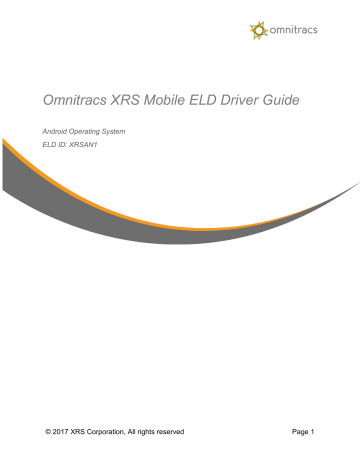
- ELD PERSONAL CONVEYANCE DRIVERS
- ELD PERSONAL CONVEYANCE DRIVER
The movement of a CMV in order to enhance the operational readiness of a motor carrier. (b) Examples of uses of a CMV that would not qualify as personal conveyance include, but are not limited to, the following: Authorized use of a CMV to travel home after working at an offsite location. Time spent transporting personal property while off-duty. ELD PERSONAL CONVEYANCE DRIVERS
Other off-duty drivers may be on board the vehicle, and are not considered passengers.
ELD PERSONAL CONVEYANCE DRIVER
In this scenario, the driver of the motorcoach can claim personal conveyance provided the driver is off-duty.
Time spent traveling in a motorcoach without passengers to en route lodging (such as motel or truck stop), or to restaurants and entertainment facilities and back to the lodging. Moving a CMV at the request of a safety official during the driver’s off-duty time. 
The time driving under personal conveyance must allow the driver adequate time to obtain the required rest in accordance with minimum off-duty periods under 49 CFR 395.3(a)(l) (property-carrying vehicles) or 395.S(a) (passenger-carrying vehicles) before returning to on-duty driving, and the resting location must be the first such location reasonably available.
Time spent traveling to a nearby, reasonable, safe location to obtain required rest after loading or unloading. 
In these scenarios, the commuting distance combined with the release from work and start to work times must allow the driver enough time to obtain the required restorative rest as to ensure the driver is not fatigued.
drop lots and the driver’s residence, and between work sites and his or her residence. Commuting between the driver’s terminal and his or her residence between trailer. Time spent traveling from a driver’s en route lodging (such as a motel or truck stop) to restaurants and entertainment facilities. (a) Examples of appropriate uses of a CMV while off-duty for personal conveyance include, but are not limited to: Motor carriers can establish personal conveyance limitations either within the scope of, or more restrictive than, this guidance, such as banning use of a CMV for personal conveyance purposes, imposing a distance limitation on personal conveyance, or prohibiting personal conveyance while the CMV is laden. Personal conveyance does not reduce aĭriver’s or motor carrier’s responsibility to operate a CMV safely. The CMV may be used for personal conveyance even if it is laden, since the load is not being transported for the commercial benefit of the carrier at that time. Guidance: A driver may record time operating a CMV for personal conveyance (i.e., for personal use or reasons) as off-duty only when the driver is relieved from work and all responsibility for performing work by the motor carrier. Question 26: Under what circumstances may a driver operate a commercial motor vehicle Withdrawn, reissued for another period of up to five years, or incorporated into the safety regulations at that time.įMCSA reminds motor carriers and drivers that additional information about ELDs is available at FMCSA updates the guidance for§ 395.8 Driver’s Record of Duty Status to read as follows: The Agency will then consider whether the guidance should be 

Posted on FMCSA’s Web site, and expires no later than. In accordance with the requirement in Section 5203(a)(2)(A) of the Fixing America’s Surface Transportation (FAST) Act, Public Law 114-94.129 Stat. We have provided a straight quote from the FMSCA published guidelines here for you to read.įMCSA replaces Question 26 as noted below. The hope is to make the industry more uniform, and more easily and fairly regulated by law enforcement groups. The FMCSA has put this guidance forth, hoping to clarify what qualifies the personal use of a conveyance in an off duty-status, and the details on what is used to determine if the movement was appropriate. Carriers, companies, and associations wanted further information in what was regarded as a movement as a personal conveyance when off-duty as opposed to a commercial motor vehicle (CMV). The FMCSA has just released guidance and clarification in response to the widespread concern and comments submitted in response to the ELD mandate that came into effect December 17, 2017. The FMSCA has provided further instruction on what counts as personal conveyance and what does not.








 0 kommentar(er)
0 kommentar(er)
